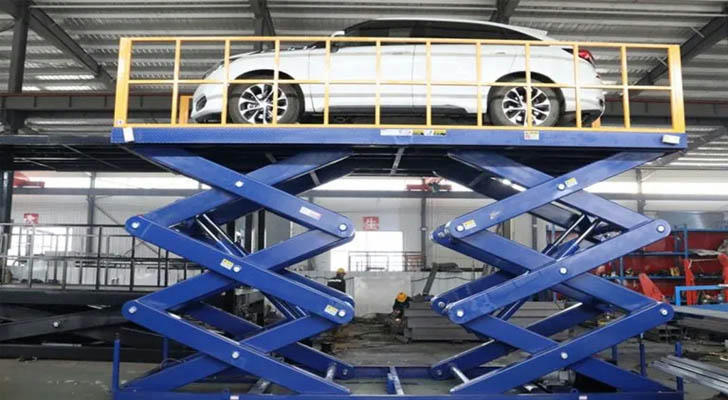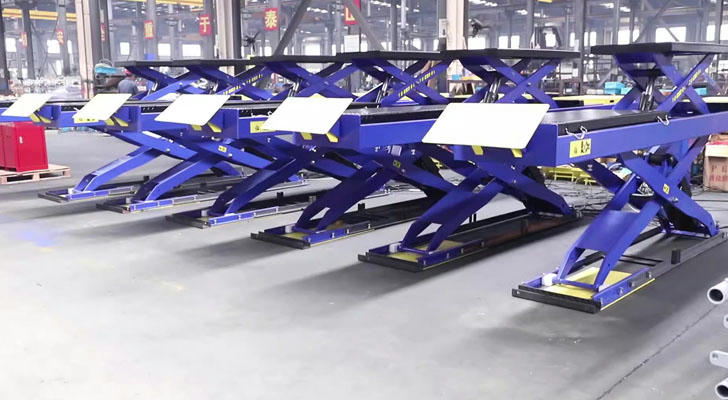How to Choose the Right Scissor Lift for Your Needs
Scissor lifts are essential tools in construction, warehouse management, and maintenance due to their stability, ease of operation, and adaptability to various environments. Selecting the right scissor lift can enhance efficiency and ensure safety. Here's how to make the best choice based on your project requirements.

1. Assess Working Height and Platform Size
The first step is determining the working height and platform size needed for your project. Scissor lifts typically range from 6 to 18 meters in height. Warehouse tasks often require lower heights, while construction or outdoor maintenance might need higher elevation.
Platform size is also crucial. If your project involves multiple workers or large materials, a larger platform will increase workspace and efficiency.
• Low heights are suitable for indoor tasks like maintenance or inventory.
• High lifts are necessary for outdoor or construction work.
• Larger platforms accommodate multiple workers or bigger equipment.
2. Consider Ground Conditions
The worksite’s ground condition affects your lift choice. For indoor, flat surfaces, electric scissor lifts are ideal due to their quiet operation and zero emissions. They’re perfect for enclosed environments.
For rough, uneven terrain, diesel-powered scissor lifts are better suited. They offer strong power and off-road tires, ensuring stable movement on challenging surfaces.
• Indoor, flat surfaces: Electric lifts are quiet and eco-friendly.
• Outdoor, uneven terrain: Diesel lifts handle tough conditions and provide more power.
3. Load Capacity
Scissor lifts vary in load capacity, from a few hundred to over a thousand kilograms. Consider the total weight of workers, equipment, and materials. If your project requires moving heavy tools or multiple workers, a higher load capacity ensures safe and efficient operations.
• Light loads (e.g., minor repairs) need lower-capacity lifts.
• Heavy loads (e.g., construction, equipment transport) require lifts with higher capacities.

4. Electric vs. Diesel Power
Power type depends on your worksite. Electric scissor lifts are quiet and emission-free, making them perfect for indoor use. Diesel-powered lifts are better suited for outdoor sites where more power is needed for rough terrain.
Electric lifts are easier to maintain, while diesel lifts offer longer operation times and more power for challenging environments.
• Indoor work: Electric lifts are quiet and sustainable.
• Outdoor work: Diesel lifts are more powerful and suited for rugged terrain.
5. Safety Features
Safety is critical. Look for lifts with essential safety features like anti-tip systems, emergency stop buttons, and platform guardrails. These ensure safe high-altitude work.
Additionally, some lifts come with smart control systems that monitor the lift’s status and provide alerts. These features enhance safety and prevent accidents.
• Anti-tip systems ensure stability during high-altitude work.
• Emergency stop allows operators to quickly halt the machine.
• Smart safety systems monitor the lift in real time.
6. Maintenance and Operating Costs
Maintenance plays a key role in the long-term costs of owning a scissor lift. Electric lifts require less maintenance, primarily focusing on battery care and hydraulic checks. Diesel lifts, however, need regular engine upkeep.
Choosing a reliable brand with accessible spare parts and strong after-sales service will reduce downtime and repair costs.
• Electric lifts have lower maintenance needs, ideal for projects requiring minimal downtime.
• Diesel lifts require more maintenance but are more powerful.
7. Budget and Investment Planning
Budget is always a factor. For short-term projects, renting may be more cost-effective, allowing you to avoid large upfront investments. However, if you frequently need a scissor lift, buying might be more economical in the long run, reducing the per-use cost.
When buying, consider both the initial cost and long-term expenses like fuel, maintenance, and spare parts. A quality lift with lower maintenance needs can save money over time.
• Renting suits short-term projects, reducing upfront costs.
• Buying is ideal for long-term use, cutting the cost per use.

Conclusion
Choosing the right scissor lift requires assessing your project’s needs, including working height, ground conditions, load capacity, power type, and safety features. By carefully evaluating these factors and considering your budget, you can select a scissor lift that enhances efficiency, maximizes safety, and offers the best return on investment.
